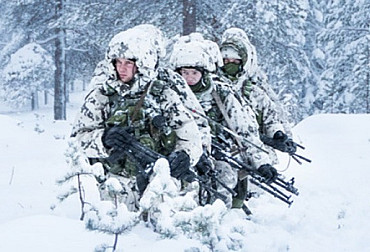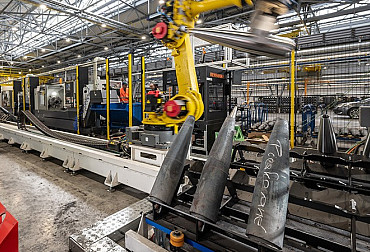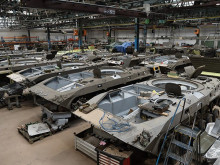TADEAS – New armoured vehicle on a Tatra chassis
Czech company Tatra Defence Vehicle (TDV) has recently completed the construction of a prototype of a new armoured vehicle on a Tatra 6x6 chassis, which bears the designation TADEAS. The vehicle is characterised by a highly variable design, with a number of different versions and modifications envisaged, and is intended for both armed forces and civilian use.
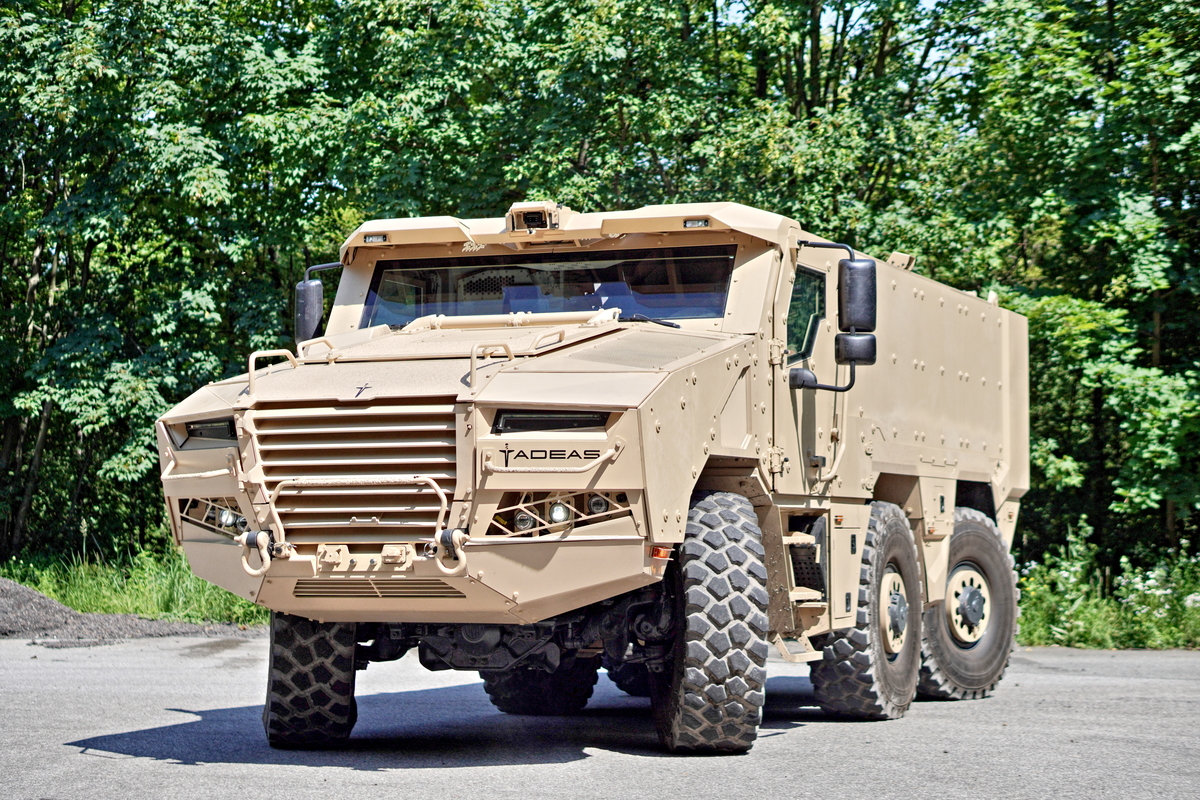
TADEAS (short for TAtra DEfence Armoured Solution) on the Tatra 6x6 chassis platform extends the TDV product portfolio with a vehicle with a wide range of applications. It is the result of a collaboration between TDV and its traditional partner, Tatra Trucks. The design of the vehicle was the responsibility of industrial designer Lukáš Taneček, who also prepared the exterior and interior design of the third generation Tatra Force, the version of which intended for military use was presented for the first time at this year's Eurosatory trade fair in Paris. TADEAS uses not only the chassis and engines from the third generation Tatra Force, but also a new on-board electronic platform, including a number of identical components for the driver's workstation and dashboard.
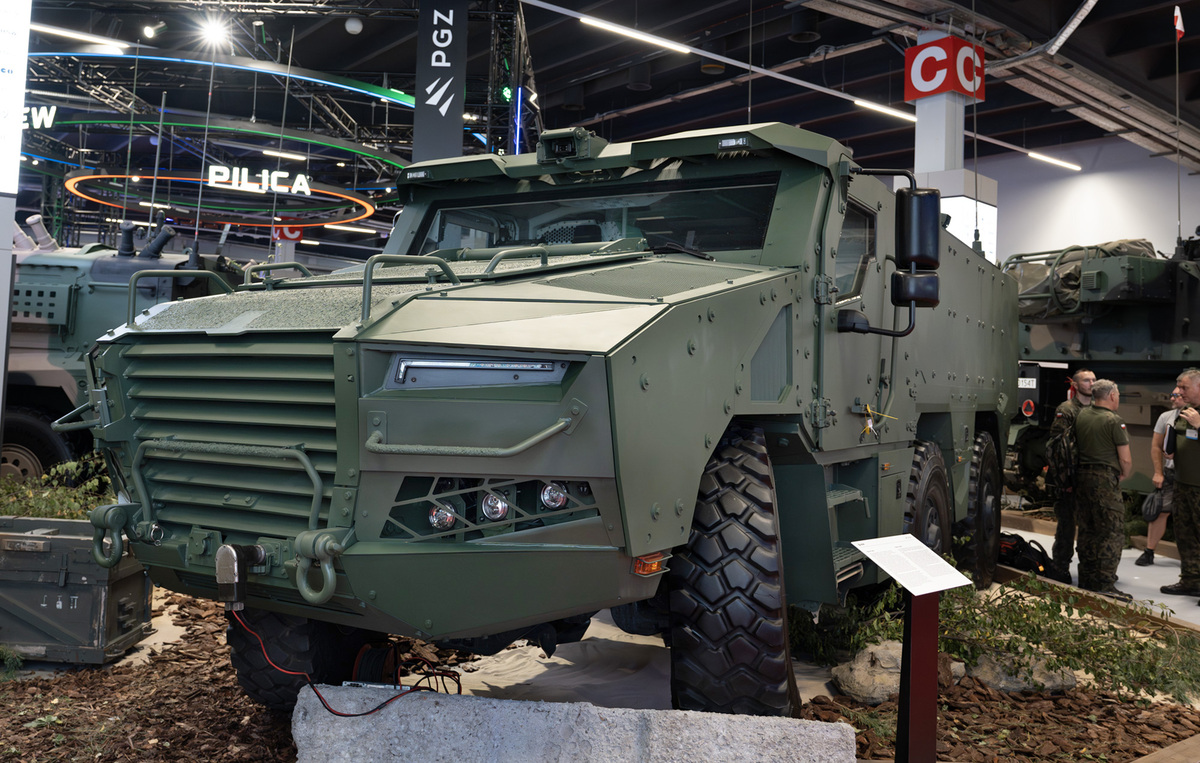
New superstructure with high durability and spacious interior
The TADEAS vehicle is primarily designed to accommodate electronic systems and can be used as a command vehicle, engineering vehicle, communications vehicle, armoured ambulance, and special-purpose vehicle for rescue, firefighting, police, etc. TADEAS falls into the medium-to-heavy weight category. Depending on equipment and protection levels, the payload can be up to 10 tonnes, with a total weight reaching 30 tonnes and a length of over 8 meters, including rear boxes for transporting equipment.
For the superstructure, the designers utilized the Tatra chassis with a central support tube by attaching the rear portion of the superstructure directly to the chassis via cross members. This allows for a large internal height within the superstructure, with an overall vehicle height not exceeding 2,900 mm when using 16.00 R20 tyres. The superstructure is constructed from welded armoured steel, and with additional armour, the vehicle achieves ballistic protection of up to level 4 according to STANAG 4569. Depending on the user's needs, the roof can be equipped with hatches, a rotating launcher, or a remote-controlled weapon station (RCWS).
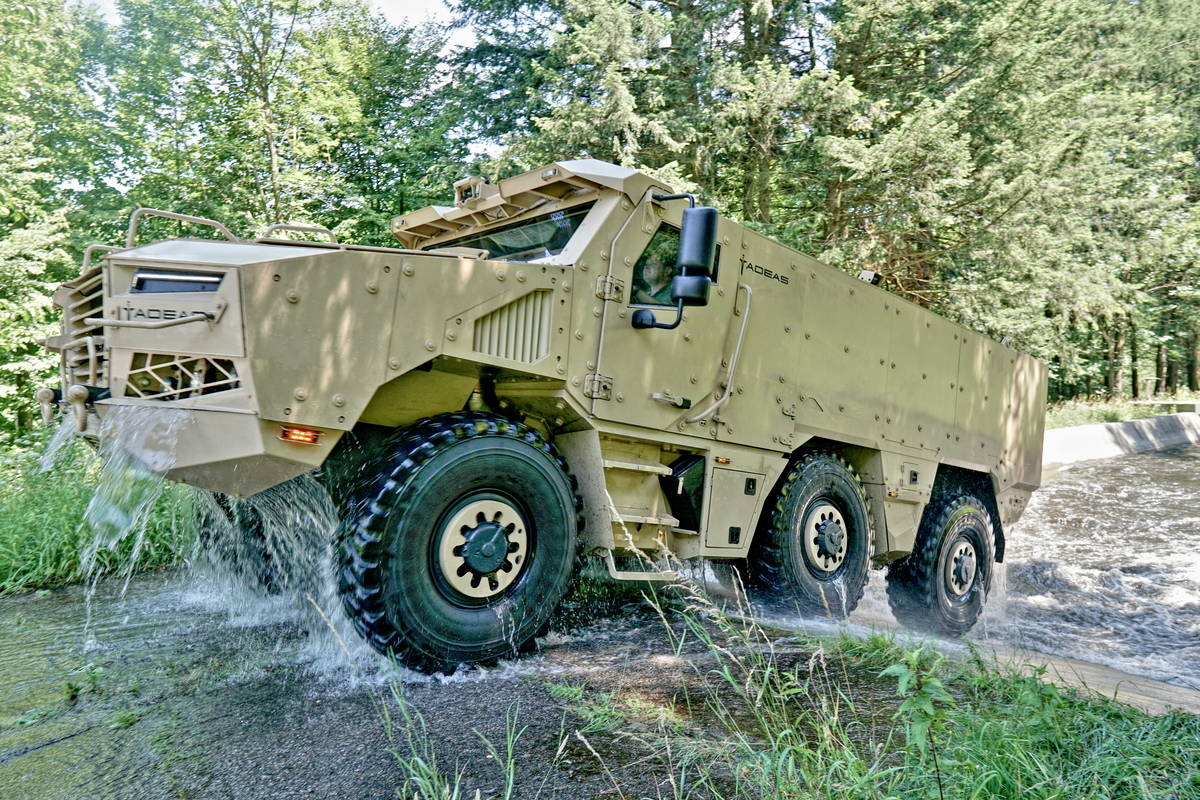
The vehicle is designed as a two-bay configuration with the engine placed in the front, covered by a distinctive hood that can be fitted with ballistic protection. Other systems, such as the air-conditioning condenser and hydraulic tank (for a winch, support legs, etc.), are also located under the hood for additional protection if needed. The superstructure consists of a single compartment, visually divided into two sections. The front section, which features one pair of side doors, houses the driver, commander, and possibly a third crew member.
Behind the driver's seat, all electronics, control units, and the circuit breaker panel are consolidated, with the vehicle batteries stored in a sealed box in the lower section, accessible from the outside and mounted on a pull-out bracket for easy maintenance and replacement. Behind the commander's seat is a full filter-ventilation system (with filters changeable from outside the vehicle) and, above it, the air-conditioning and heating systems. The space in front of the commander’s seat is reserved for customer-specific equipment (such as laptops, RCWS controls, or other systems).
Behind the front control compartment is the space intended for an 11-member squad or the aforementioned special equipment installations. Access to the vehicle is via an electro-hydraulically operated folding rear ramp. The space at the rear can be used for storage cabinets (in the basic version of the vehicle) or to install special equipment such as support legs or an extendable mast. The split-hull design also allows for a variant with only the front crew cabin, with the rear portion available as a platform for a weapon system, drone launcher, or water/fire extinguisher tank.
Tatra chassis and a wide range of powertrain options
The chassis follows the traditional Tatra design with a central load tube and independently suspended semi-axles featuring air suspension. The first and third axles are steerable, with a turning radius of just 7 meters. The second axle is positioned closer to the third axle, resulting in a wheelbase of 2,952 + 2,150 mm. All axles have a load capacity of 10 tonnes and are equipped with a central tyre inflation system. TADEAS features a new generation of axles with wheel reducers, allowing for a choice between drum or disc brakes.
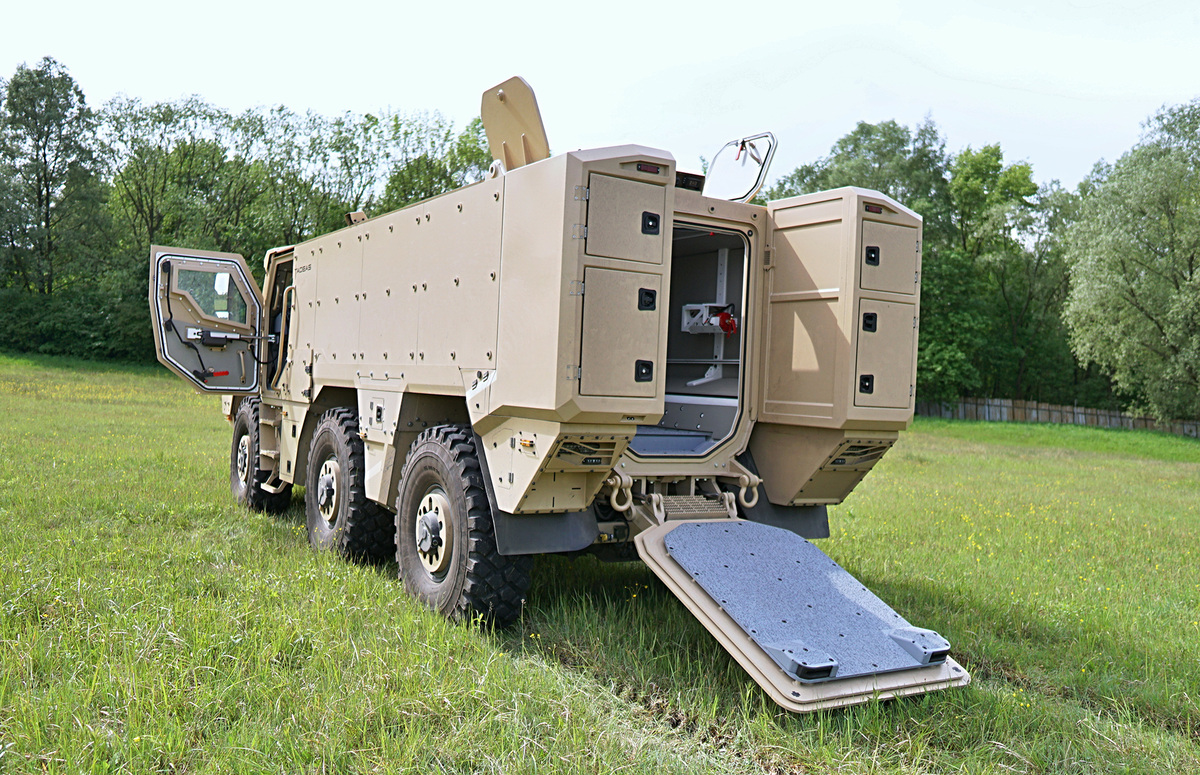
The TADEAS design (including the fixed shape of the front bonnet and bumper) is highly versatile, allowing for the integration of different engines. At the core of the lineup are modernized Tatra T3-928 RE series eight-cylinder air-cooled engines with an electronically controlled 12.7-litre injection pump in three power versions – 300 kW / 2,100 Nm (Euro III), 340 kW / 2,250 Nm (Euro V), and 370 kW / 2,400 Nm (emission-free). These are complemented by liquid-cooled 9.3-litre Caterpillar C9.3B six-cylinder engines with switchable outputs of 395 kW / 2,000 Nm (Euro III) and 447 kW / 2,265 Nm (emission-free, battle mode), as well as the 8.9-litre Cummins ISL engines producing around 300 kW in both Euro III and Euro VI versions. The engines can be paired with fully automatic Allison or ZF Ecolife II transmissions, or the automated ZF Traxxon variant. A Tatra two-speed auxiliary gearbox with a neutral-shift option is always built into the chassis.

The maximum speed of the vehicle is 90 km/h with 16.00 R20 tyres or 110 km/h with 14.00 R20 tyres. TADEAS is equipped with two separate fuel tanks (left and right) with a combined capacity of 400 litres, providing a driving range of up to 700 km. The twin-tank configuration enhances safety and serviceability in the event of damage, and the tanks can be optionally armoured or fitted with a self-sealing system.















